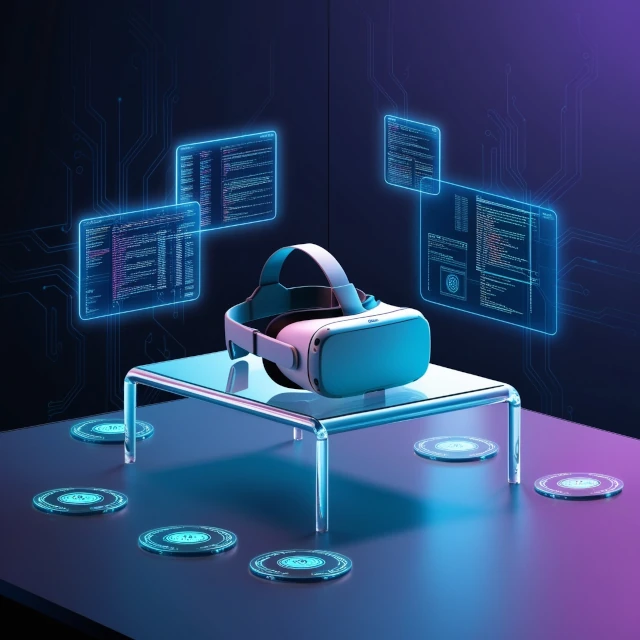Securing the Virtual Workplace: Essential Strategies for VR Security
Virtual workplaces are no longer just a forward-thinking idea—they’re here, and they’re changing how we work daily. With virtual reality (VR) creating immersive environments for collaboration, the need for robust security measures has never been more pressing. If your business uses or plans to adopt VR, understanding the essentials of VR security is key to ensuring a safe and productive workspace.
Unique Security Challenges in VR Workplaces
VR workplaces bring exciting opportunities but also introduce new security concerns unique to the medium. Let’s highlight the risks that deserve attention:
- Biometric Data Collection: VR often captures sensitive biometric data such as eye movement or hand gestures. This data needs airtight protection to prevent misuse.
- Spatial Workspace Mapping: Mapping a VR space could reveal sensitive business layouts or environments, violating privacy.
- Screen Sharing Vulnerabilities: Screen sharing in VR might expose business-critical or personal data to unintended recipients.
- Client Data Protection: Just like in traditional setups, client data needs extra safeguarding in VR environments.
Failing to address these challenges could leave gaps in your security framework, which hackers or competitors could exploit.
Hardware Security Strategies for VR
The security of your VR infrastructure starts with the hardware. Implementing proper measures ensures your devices don’t become a weak link. Here’s how businesses can better secure their VR setups:
- Preconfigured VR Headsets: Use enterprise-grade VR headsets configured to disable non-essential features that could threaten security.
- Secure Network Integration: Always connect VR equipment to networks that are secure and monitored for potential threats.
- Regular Firmware Updates: Outdated firmware is a significant risk. Keep VR devices updated with the latest security patches.
- Biometric Authentication: Require user-specific biometric authentication for access to sensitive VR systems.
Securing your hardware prevents unauthorized access and reduces vulnerabilities, keeping your VR environment safe.
For further insights on enhancing safety across tech setups, check out our page on WordPress Security for valuable overlaps in cyber defense principles.
Robust Platform Management
Platform management defines the operational groundwork of your VR systems, ensuring they operate securely without hindering performance.
- Regular Security Updates: Schedule updates to minimize risks of new vulnerabilities.
- Remote Management Capabilities: Enable authorized admins to oversee and manage VR environments from anywhere.
- Data Encryption and Isolation: Protect sensitive VR data by isolating and encrypting it from other networks or devices.
These practices deeply integrate with general IT strategies, reflecting adaptability for both traditional and VR operational environments.
Comprehensive Access Control
Who has access to your VR platform matters as much as how the platform is configured. Prevent unauthorized entries with proper access management, including:
- Centralized User Management: Use a single system to administer who can access VR assets.
- Remote Device Control: Control VR devices remotely to address breaches or urgent deactivation needs.
- Two-Factor Authentication (2FA): Require an extra layer of security beyond a simple password.
- Emergency Access Revocation: Have protocols for immediately disabling access for compromised accounts or devices.
Centralized access control keeps your workplace protected while ensuring only authorized individuals can use your systems.
Real-World VR Security Implementation
Adopting VR security measures isn’t just about knowing what to do—it’s about executing it effectively. Here are steps businesses can follow:
- Prepare Documentation Systems: Include protocols for handling security breaches, client data, and device misuse in your policies.
- Conduct Regular Security Audits: Assess systems on a bi-weekly, monthly, and annual basis to identify and fix vulnerabilities.
- Develop Emergency Response Plans: Plan for different scenarios, from data theft to headset compromise.
- Phased Rollout of Measures: Start small with pilot programs before launching VR security policies organization-wide.
Success comes down to consistency in following these measures and updating them regularly as new risks emerge.
Future-Proofing VR Security Systems
As VR continues to evolve, so do the threats against it. Businesses must stay ahead of the curve with proactive security improvements.
- Integration With Traditional Security Tools: Combine VR platforms with robust existing systems, such as Windows tools.
- Adopt Emerging Security Features: Stay informed about updates and innovations in VR security to continuously improve defenses.
- Adapt Protocols Over Time: Security isn’t static. Regularly evaluate and refine processes to meet changing needs.
For businesses navigating the transition to remote and hybrid setups, exploring tools like VR productivity apps can also prove valuable in syncing workflow and security.
Conclusion
Ensuring VR security is no longer optional—it’s an absolute requirement in today’s virtual business landscape. From hardware defenses to access control and future-proofing strategies, there are many ways to protect your workplace and clients. By tackling these challenges head-on, you can build a secure virtual space that fosters trust and boosts productivity. Ready your business for the next frontier of work and protect your VR environment today.

